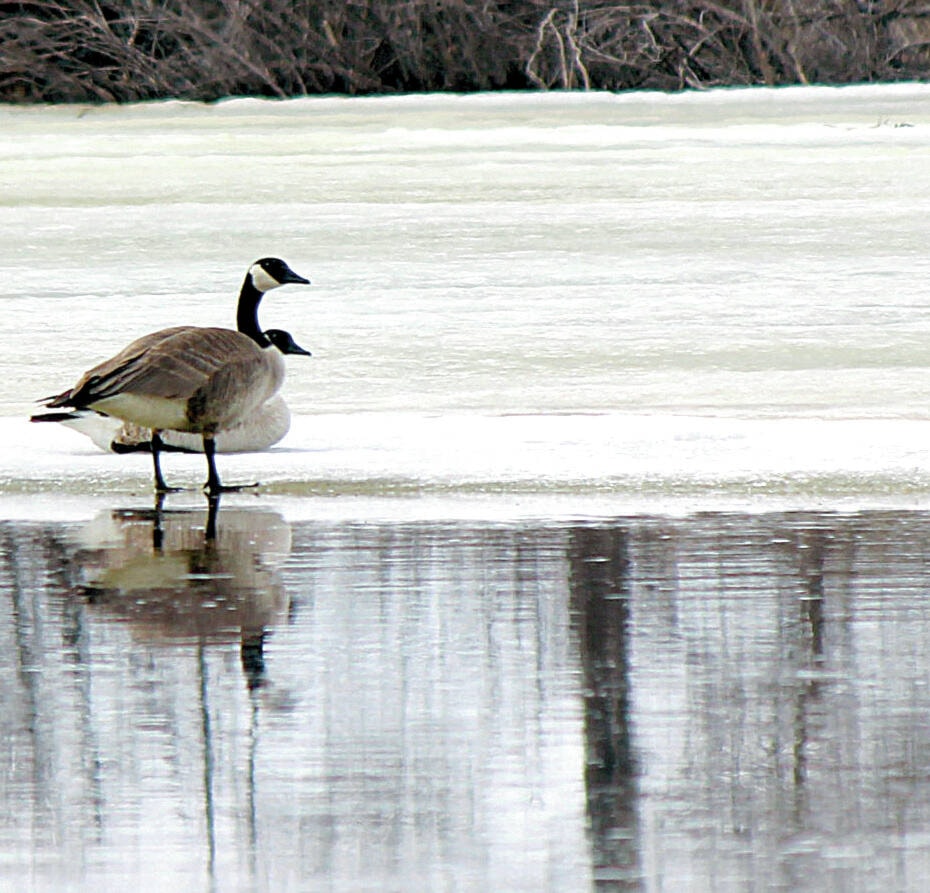Geese a plenty were found in this year’s Christmas Bird Count.
With warm temperatures and open water available all around central Alberta, some 1,557 Canada geese were counted in the region this month. This falls just short of the record number of geese counted in December of 2017 — some 1,971.
But it’s a huge difference from the zero geese spotted in the -30 C weather during last December’s bird count.
Count organizer Judy Boyd, of the Red Deer River Naturalists, believes the unusually mild conditions so far this winter mean there was no real reason for geese to fly south.
Migration takes a heavy toll on them, she added. “They have to stop to feed, to fatten up, and then keep going. Think of how far some birds have to fly — to the Gulf of Mexico.”
In between, they must navigate many hazards, including hunters and predators, greater exposure to avian flu, and large cities with misleading artificial lights and tall glass buildings.
Boyd said a Toronto group goes around collecting the thousands of carcasses of birds killed flying into skyscrapers. Given these odds, staying put where there’s enough food and water makes sense, she added.
Another oddity in this year’s bird count — which was conducted by about 85 central Alberta volunteers on Dec. 25 — was the early return of some horned larks.
Boyd said they are supposed to arrive in this area in January, but some have come a month early. She isn’t sure whether the mild weather also played into this unusual behavior.
As well, the lack of giant flocks of red polls, bohemian waxwings, and snow buntings were noticed. Usually several hundreds of these birds can be seen flying together in the winter months, said Boyd. But during this year’s bird count, some flocks spotted were as small as 25 to 35 birds. She feels this might just be an incidental observation on that particular day, since she’s seen some larger flocks earlier in the season.
However, ornithologists have recorded changes to some bird populations over the last few decades. Boyd read that many California juncos have stopped migrating out of that State and are instead nesting there, while barn swallows are inexplicably sticking around in Argentina. “Maybe it’s climate change, I don’t know…”’
While no completely out-of-province birds were seen during this month’s bird count, Boyd knows a few were reported earlier this season.
A Harris’s Sparrow was seen in central Alberta, even though it’s supposed to nest in the Northwest Territories and head to the central U.S. for the winter. A killdeer was spotted at Riverbend — although this bird was supposed to now be in the southern U.S. and Gulf area. And an out-of-season American Kestrel was also seen.
But perhaps the strangest report was of a Eurasian eagle owl at someone’s bird feeder. Boyd said she has no clue how this exotic bird could have blown so far off course as it normally travels between Siberia and Ethiopia.
The annual Christmas Bird Count is done to compile one of the world largest sets of wildlife survey data. The results are used to assess population trends and the distribution of birds. Another bird count will be done in May.
